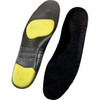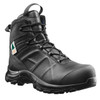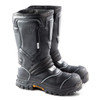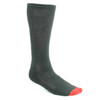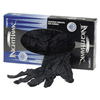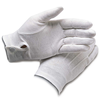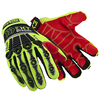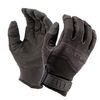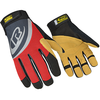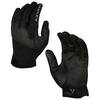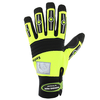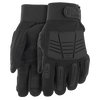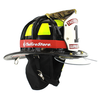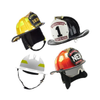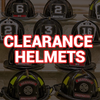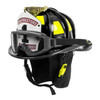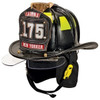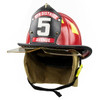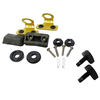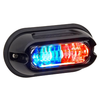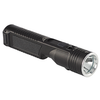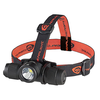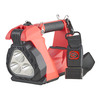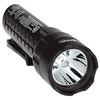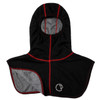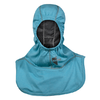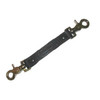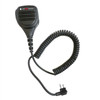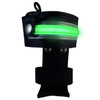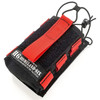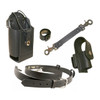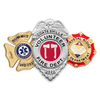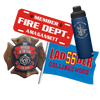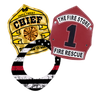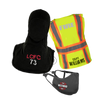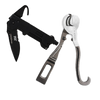Details
ATI’S ARMORED REEL is a 1" diameter semi-rigid hose that replaces the heavy red rubber booster hose that was traditionally in use.
Its jacket is continuous high tenacity polyester in a plain weave combined with a rigid and heavy polyester helical interior reinforcement, yielding a lightweight, yet extremely durable booster line. ARMORED REEL is red and available in lengths of 50’, 100’, 150’ and 200′.- Service Pressure: 300 psi
- Acceptance Pressure: 500 psi
- Burst Pressure: 1500 psi
Armored Reel is a one-inch, polyester jacketed, lightweight semi-rigid hose, intended to replace the heavy rubber hose traditionally used as a booster line. Like that booster line, Armored Reel can be charged while on the reel. It meets or exceeds NFPA 1961 Fire Hose Standard, 2007 edition.
Weight and Coil Size:
- Length: 100'
- Weight: 13 lbs
- Coil Size: 26"
- Consumed Space: 1.3 ft3
Jacket Construction: The hose is single jacket, constructed with 100% continuous, virgin high tenacity polyester that is circular woven. The outer jacket is thoroughly impregnated with a polymer compound to seal the jacket and provide superior resistance to chemicals, abrasion, oil and ultra-violet light. Compound is heat set at 250º F.
Lining: The synthetic lining is 0.023” extruded polyurethane, combined with a helical interior reinforcement. The lining is flexible between -58º F and 180ºF and compounded to resist deterioration from ozone. No reclaimed material is used. The finished form shall be free of pits or other imperfections, resulting in a smooth lining that reduces friction loss.
Adhesion: The rate of separation between the liner and inside jacket is such that 1.5" wide strip cut transversely, shall not be greater than 1" per minute over a period of ten minutes, under a weight of 12 pounds.
Couplings: Expansion-type in hardcoat anodized aluminum is available. The anodize process creates a hard aluminum oxide coating which improves the abrasion, corrosion and electrolysis resistance of the completed fitting, while also preventing excessive wear on the male and female threads. Field detachable couplings are available by special order. All couplings meet NFPA 1963, Standard for Fire Hose Connections, 2009 edition.
Hydrostatic Tests:
- Pressure: 300 psi
- Proof Test: 600 psi
- Burst Pressure: 900 psi
Abrasion Resistance: Outer jacket must withstand a minimum of 15,000 cycles on the Taber Abraser with no abrasion through the filler yarn as defined in FM Class Number 2111, Factory Mutual Approval Standard for Fire Hose.
Cold Resistance: Hose shall have the capability of use down to -40 º F. There shall be no apparent damage to jacket or lining when subjected to the following cold bend test: A 3-foot section of hose shall be exposed to a temperature of -40 º F. for a period of 24 hours. At the end of the exposure period, the hose shall be rapidly bent 180 degrees back onto itself, first one way and then the other. Following this procedure, the hose shall not leak, nor show any damage to the jacket when subjected to the burst pressure shown above.
Heat Resistance: The ability of the hose to resist heat shall be verified using the test procedures defined in UL 19, Lined Fire Hose and Hose Assemblies, Heat-Resistance Test; FM Class Number 2111, Factory Mutual Approval Standard for Fire Hose, Heat Resistance.
Ozone Resistance: Hose liner shall show no signs of cracking under 7 power magnification when tested in accordance with ASTM D1149-86, Standard Test Methods for Rubber Deterioration-Cracking in an Ozone Controlled Environment (samples prepared in accordance with ASTM D518-86, Standard Test Method for Rubber Deterioration-Surface Cracking, procedure C). Specimen shall be elongated at 15% for 120 hours of exposure at 100 pphm ozone at a temperature of 122 º F.
Marking: Beginning at a point not less than 5’ ± 6” from each end, each length shall be stenciled in letters at least one inch high with the manufacturer’s identification, country of origin, month and year of manufacture, and the words, “Service Test to 400 psi. per NFPA 1962.”


